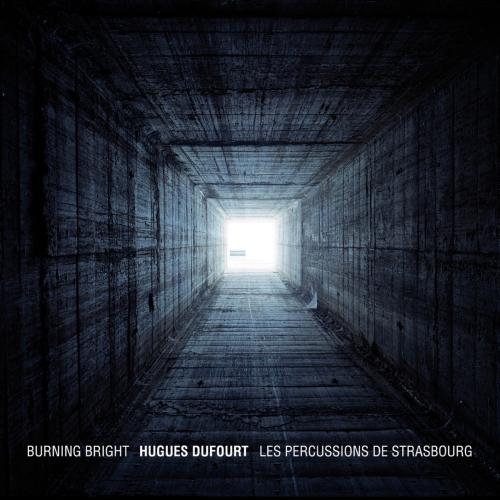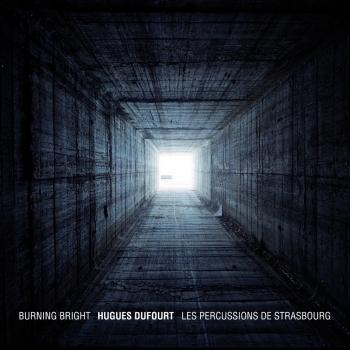
Dufourt: Burning Bright Percussions de Strasbourg
Album Info
Album Veröffentlichung:
2016
HRA-Veröffentlichung:
13.09.2017
Label: Percussions de Strasbourg
Genre: Classical
Subgenre: Instrumental
Interpret: Percussions de Strasbourg
Komponist: Hugues Dufourt (1943)
Das Album enthält Albumcover Booklet (PDF)
Entschuldigen Sie bitte!
Sehr geehrter HIGHRESAUDIO Besucher,
leider kann das Album zurzeit aufgrund von Länder- und Lizenzbeschränkungen nicht gekauft werden oder uns liegt der offizielle Veröffentlichungstermin für Ihr Land noch nicht vor. Wir aktualisieren unsere Veröffentlichungstermine ein- bis zweimal die Woche. Bitte schauen Sie ab und zu mal wieder rein.
Wir empfehlen Ihnen das Album auf Ihre Merkliste zu setzen.
Wir bedanken uns für Ihr Verständnis und Ihre Geduld.
Ihr, HIGHRESAUDIO
- Hugues Dufourt (1943- ): Burning Bright:
- 1 I. Vertical 1 03:48
- 2 II. Suspendu 1 04:56
- 3 III. Blocs résonnants 05:59
- 4 IV. Tourbillons 1: IV. 05:46
- 5 V. Densification: V. 04:34
- 6 VI. Vertical 2: VI. 06:41
- 7 VII. Espaces pulsés: VII. 08:09
- 8 VIII. Tourbillons 2: VIII. 03:16
- 9 IX. Marches: IX. 03:11
- 10 X. Lointains 1: X. 06:36
- 11 XI. Suspendu 2: XI. 05:53
- 12 XII. Lointains 2: XII. 05:29
Info zu Dufourt: Burning Bright
Written to commemorate the fiftieth anniversary of the percussion ensemble Les Percussions de Strasbourg, Burning Bright borrows its title from William Blake’s famous poem The Tyger, published in 1794.
This incandescent poem celebrates the collision of opposites which gives the truest representation of the world and is the source of all creative power. The age-old conflict between “innocence” and “experience”, those “two contrary states of the human soul”, courses through all of Blake’s work, lending his poetry both its tragic aspect and its visionary tone. A non-conformist freethinker who was vehemently opposed to all forms of moral, theological or political oppression, Blake supported the French Revolution and denounced the enslavement of African-Americans. Despite his worldly engagements, he did not abandon his mystic quest, which – in the tradition of Dante and Milton – he considered the only feasible way of articulating the splendour of one’s inner illuminations. The wild and eruptive fury of his visions inspires fear and terror. Yet, from the abyss of misery, mankind can perceive the rise of a burning light, which indicates, without any promise, a possible alternative to the savage rule of force.
Composed as one single piece, like an immense adagio in the manner of Bruckner, Burning Bright’s poetic vision breaks with the traditional techniques of demarcation, with all its contours and closures. The music rises in layers, or unfolds in abundant and meandering surges. The varying depths of the timbres, fading towards an indeterminate horizon, create their own resonant space. Sounds – swelling, diffusing, writhing – blend like fluids or gases. Working on timbre is but the art of retouching. The drift of coloured masses replaces the interplay of formal arrangements beloved of the last century. Friction takes over from customary percussion techniques.
Following Blake’s example, Burning Bright rallies elementary energies: a drama with neither narrative nor anecdote, its unity emerges through telluric rumblings. Not unlike the films of Stanley Kubrick, it uncovers a vast space, which could well become, despite the hopes of our times, a space of eternal confinement.
Percussions de Strasbourg
Percussions de Strasbourg
It all began in 1959, when Pierre Boulez was invited to conduct his work Le Visage Nuptial in Strasbourg. To form the large desk of percussions he needed, musicians from the Strasbourg Orchestra and the ORTF orchestra were brought together. The six young musicians – Bernard Balet, Jean Batigne, Lucien Droeller, Jean-Paul Finkbeiner, Claude Ricou and Georges Van Gucht – driven by a common innovative will and a strong friendship, then decided to create a percussion ensemble : repertoire, choice of instruments, everything had to be invented… the « Groupe Instrumental à Percussion » was born and later became « Les Percussions de Strasbourg ».
The first concert was given at the ORTF, on January 17th, 1962, in the presence of French composer Serge Nigg. Very quickly, the ensemble inspires the creation of a new repertoire by composers such as Messiaen, Stockhausen, Serocki, Kabelac, Ohana, Xenakis, Mâche or Dufourt … As Pierre Boulez says later: « A repertoire was necessary for the Groupe, but the Groupe has made the repertoire necessary. «
In 1967, the six percussionists perform Ionization of Varese, in agreement with the composer, while the score requires the participation of… thirteen percussionists. They carried this off with musical mastery and dramatic brio and opened the doors of success to a hitherto unprecedented musical genre.
Thereafter, Les Percussions de Strasbourg has, and continues to actively commission and innovate, travelling all around the world to perform at major international festivals, from Berlin to Osaka, Persepolis to Sydney, via Royan, Donaueschingen, Edinburgh, Athens, Israel, Sao Paulo, New York, Montreal, etc.
Through their many travels and a strong collusion with the composers, they actively contribute to the sound research and the invention of new instruments, such as the sixxen designed by Xenakis.
More than 50 years later, the team expands and gradually integrates the fourth generation of Percussions de Strasbourg. Constantly revisiting the contemporary heritage, innovating with the evolution of new technologies and the expansion of scenic practices and expression : a challenge to invent and explore the wide field of world percussion in the 21st century.
Les Percussions de Strasbourg has performed more than 1600 concerts in 70 countries since its inception, has a repertoire of more than 300 original works written for them, has developed one of the most unique ‘instrumentarium’ in the world with over 500 instruments, has published over 30 recordings, and been awarded more than 30 international prizes… among which a « Victoire de la Musique classique » in 2017 for the 1st release of the new record label « Percussions de Strasbourg » with Burning Bright by Hugues Dufourt. The ensemble is also very active in pedagogy and develops many activities for everyone: masterclasses, workshops, concerts, educational or scholar concerts, Percustra collective creation workshops, training of teachers and trainers…
Booklet für Dufourt: Burning Bright













